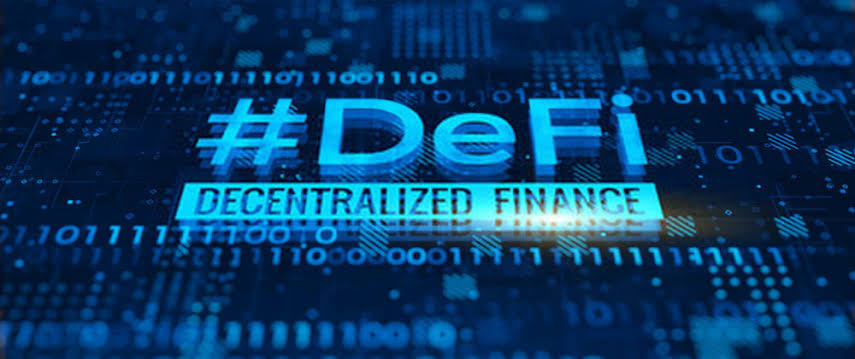Uncategorized
What are Decentralized Finance and its benefits?


Decentralized finance, or DeFi, refers to a group of blockchain-based applications that aim to provide peer-to-peer alternatives to traditional financial services and institutions. After generating a lot of buzzes last year, Decentralized Finance has continued to gain traction, collecting significant sums of cash and exceeding expectations that it would be one of the top trends in 2020.Decentralized finance, in its most basic form, is a system in which financial items are made available on a public decentralized blockchain network, making them accessible to anybody rather than going through intermediaries such as banks or brokerages. Unlike a bank or brokerage account, DeFi does not require a government-issued ID, Social Security number, or proof of address. DeFi refers to a system in which buyers, sellers, lenders, and borrowers connect peer to peer or with a strictly software-based middleman rather than a firm or organization conducting a transaction using software developed on blockchains.
The Total Locked Value TVL in Dapps Protocols now stands at little under $11.5 billion, up from less than $1 billion a year ago, according to defi crypto, the go-to data aggregator for decentralized finance. While this pales in contrast to traditional financial markets, the most important conclusion is that DeFi has risen more than tenfold in the last year. This is a clear indication of the growing popularity of decentralized finance. What’s more promising is that DeFi’s rapid expansion appears to be a reflection of the company’s value offer. Let’s look at what makes decentralized finance so appealing to investors. Defi coins, unlike cryptocurrencies, try to maintain their prices by connecting them to non-crypto currencies, such as the US dollar.
Benefits:
Can be used without permission:
The phrase “decentralized finance” already conveys what the DeFi movement views to be its defining characteristic. That isn’t surprising. The value proposition of blockchain is based on decentralization. The goal is to reduce reliance on companies and other institutions for supervision, server space, data storage, and other services. This is accomplished by ensuring that all members of a blockchain network have access to the same transaction history. By making sure that everyone has easy access to financial services, the decentralized method can help democratize banking and finance. The majority of DeFi apps are built on Ethereum, the second most popular blockchain platform after Bitcoin. Ethereum is highly decentralized and open to everyone interested in building or using DeFi software because it is a permissionless (public) blockchain. Furthermore, the blockchain’s permissionless nature, as well as the interoperability it offers, allows for a wide range of third-party connections.
It’s worth noting that these qualities aren’t unique to Ethereum. Ethereum, on the other hand, has positioned itself as the preferred platform for developing not only DeFi apps but also other sorts of decentralized apps due to its position as the premier network for smart contract development (dApps).
Transparent:
Greater transparency comes with decentralization. The network’s data is available publicly for inspection since the distributed ledger containing information about all of the events that have occurred on a blockchain network is shared by everyone. Furthermore, the cryptographic principles that underpin blockchain ensure that data is only recorded after its legitimacy has been confirmed. The transparency provided by DeFi applications can be a game-changer for customers. It can assist consumers to enhance their due diligence and identify and prevent financial scams and damaging business practices.
Stability:
Blockchain technology provides full immutability through the creative use of cryptography and consensus procedures such as proof-of-work. Manipulation of records recorded on a blockchain network is virtually impossible as a result of this. When combined with the previously mentioned features, this results in a level of security that is difficult, if not impossible, to attain with traditional methods. DeFi apps bring the inherent benefits of blockchain to the financial sector while also attempting to design user-friendly interfaces to ensure a pleasant experience. Smart contracts, like as dApps, also give additional protection against unscrupulous actors and fraudulent transactions.
Help in financial service centers:
DeFi, based on what we’ve seen thus far, has the potential to help traditional finance. However, like with any disruptive technology, DeFi’s promise extends beyond simply improving on the current state of affairs. Its true strength, however, rests in its ability to disrupt the market by enabling new forms of financial goods and services. Even at this early level, technology shows a lot of potential in this area. It’s already transforming how people manage their assets, borrow and lend money, and trade online. Here are a few of DeFi’s most well-known applications:
Borrowing and lending:
DeFi has facilitated the creation of peer-to-peer lending and borrowing solutions that benefit the end-user significantly. These services include cryptographic verification techniques and smart contract integration, which eliminate the need for traditional middlemen like banks to validate and conduct lending transactions. This makes the process cheap and fast while still ensuring the protection of the transaction’s counterparties. Other advantages include faster transaction resolution and improved accessibility.
Helps in savings:
People can now manage their funds in innovative ways, thanks to the growing popularity of DeFi lending services. Users start collecting interest on their crypto assets by locking them into lending protocols like Compound, as explained above. As a result, DeFi saving apps have emerged that can connect to various lending protocols to maximize their customers’ capacity to earn income. Yield farming is a word that has been used to describe the growing trend of users shifting their idle crypto assets around to different loan protocols in order to increase their profits.
Conclusion:
Blockchain technology and cryptocurrencies have a wide range of real-world uses, but they appear to be having the greatest impact on the financial sector. The rationale for this is simple: there are numerous ways in which new processes and decentralization can elevate financial markets and propel them forward. Start slowly, keep humble, and don’t get ahead of yourself when venturing into the new financial territory. Keep in mind that digital assets exchanged in the cryptocurrency and DeFi worlds are volatile, with high chances of profit.


